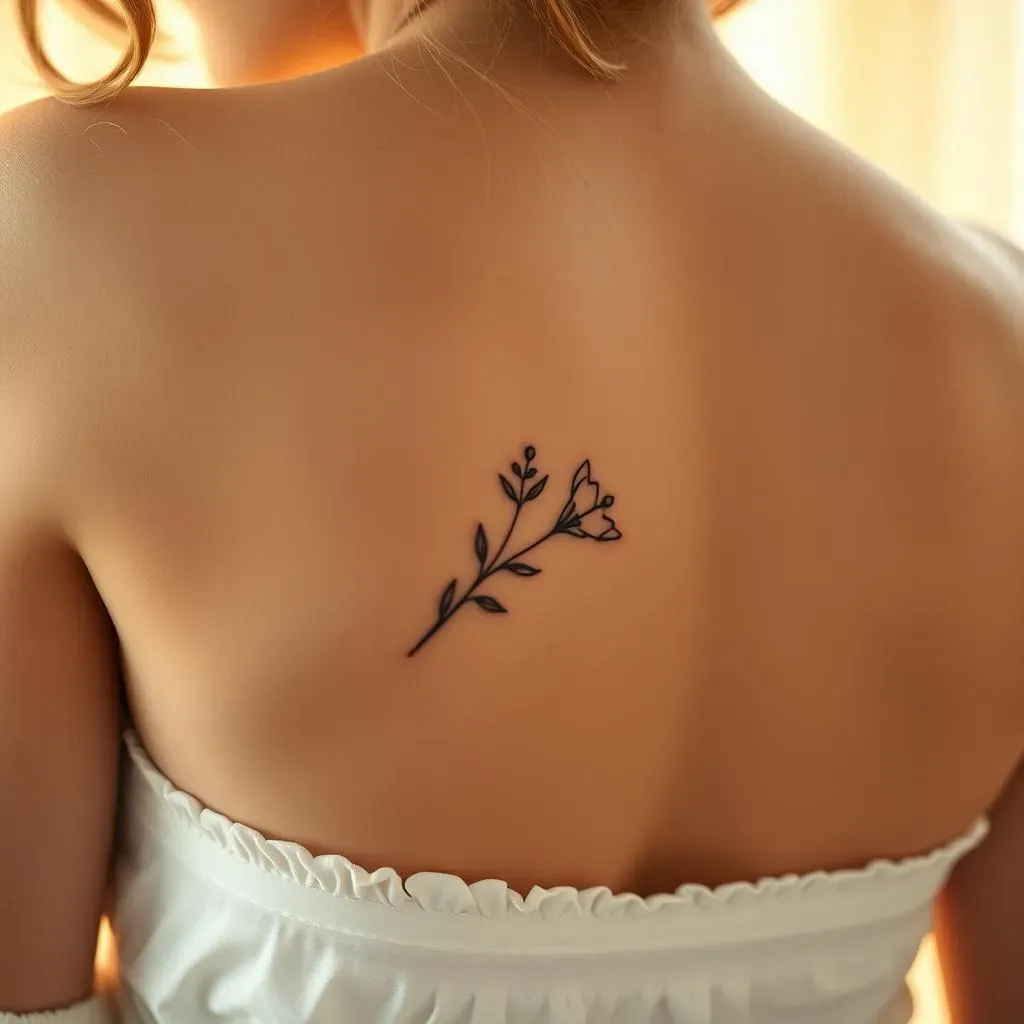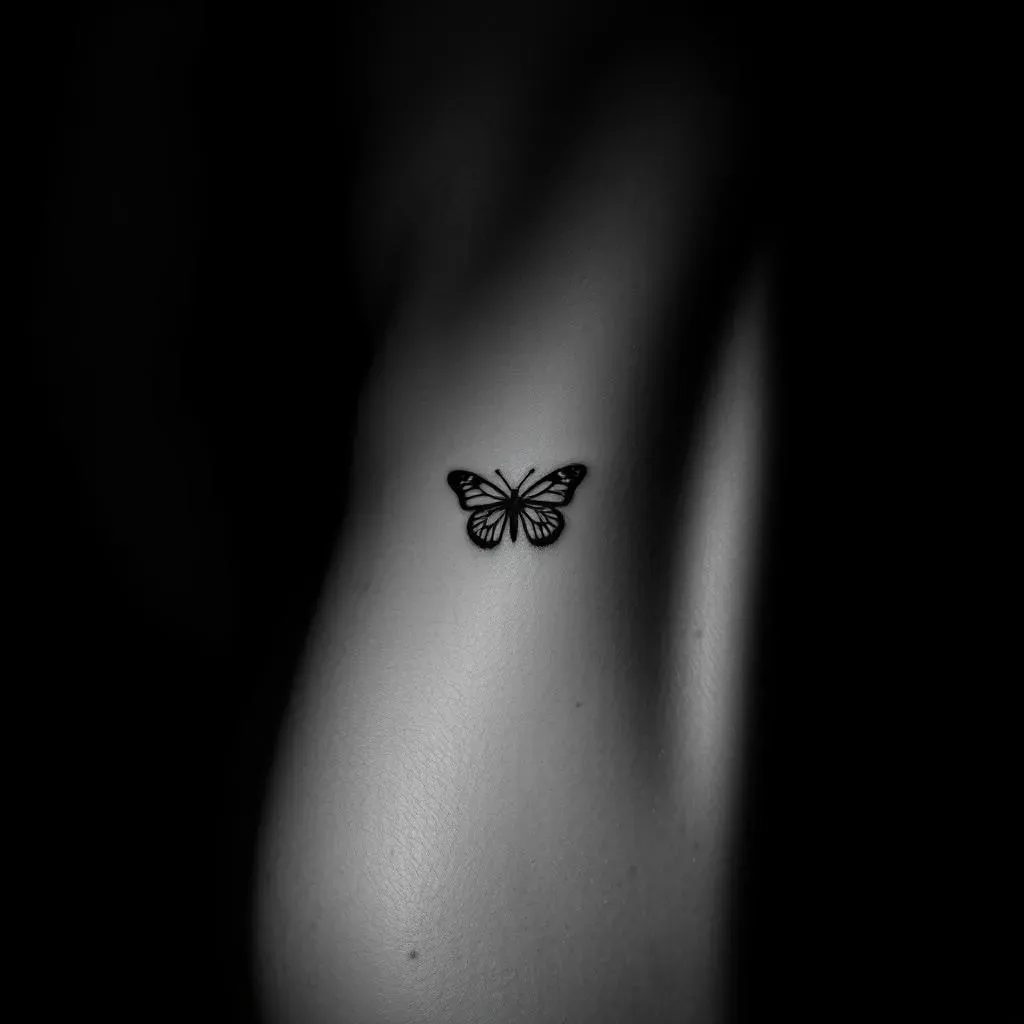Table of Contents
So, let's talk about lower back tattoos, or as some might call them, "tramp stamps." Are lower back tattoos trashy? That's the question that's been bouncing around for years. One minute they're the height of cool, gracing the bodies of pop stars and trendsetters, and the next, they're deemed a fashion faux pas, a symbol of something...less than classy. This isn't just about ink on skin; it's about how society views women, their bodies, and their choices. In this article, we’re going to take a walk through the history of this particular tattoo placement, how it got its reputation, and if it's still fair to ask, "are lower back tattoos trashy" in 2024? We will explore the cultural shifts, the changing perceptions, and whether or not it's time to ditch the outdated labels. Get ready to question what you think you know about lower back tattoos, because it's time to unpack this loaded topic.
The Rise and Fall (and Rise Again?) of Lower Back Tattoos

The Rise and Fall (and Rise Again?) of Lower Back Tattoos
Okay, so lower back tattoos, right? They had a moment, a real peak, back in the late '90s and early 2000s. Think pop stars, music videos, red carpets – these tattoos were everywhere! It was like the ultimate cool-girl accessory. Then, almost as quickly as they rose to fame, they got labeled "trashy," "tramp stamps," and suddenly, everyone who had one was regretting it. It's fascinating how something can go from being so desirable to so cringe-worthy in such a short time. But here's the kicker: they're making a comeback. Yep, just like low-rise jeans and chunky sneakers, lower back tattoos are having another turn in the spotlight. It's like fashion is just one big circle, constantly recycling and reinventing itself.
Why the "Tramp Stamp" Label? Exploring the Stigma

Why the "Tramp Stamp" Label? Exploring the Stigma
Okay, so where did this whole "tramp stamp" thing come from? It's not exactly a flattering nickname, is it? The term itself is loaded, suggesting that women who get lower back tattoos are somehow promiscuous or of low moral character. It's rooted in a lot of messed-up ideas about female sexuality and the policing of women's bodies. Think about it: the lower back is often seen as an erogenous zone, and when you combine that with the tattoo trend of the early 2000s—low-rise jeans, crop tops, and a peek of ink—it was like a perfect storm of judgment. Media played a huge role, too, often portraying women with lower back tattoos in a hyper-sexualized way. It’s like, if you dared to put a butterfly or tribal design there, you were automatically labeled and judged. It’s a pretty harsh and unfair label, to be honest.
Factors Contributing to the Stigma | Explanation |
|---|---|
Hypersexualization of Women | The lower back is often viewed as an erotic body part, leading to tattoos in this area being associated with sexuality. |
Media Portrayals | Popular media often depicted women with lower back tattoos as promiscuous, reinforcing negative stereotypes. |
Social Judgment | The term "tramp stamp" is a derogatory label used to shame women for their choices about their bodies. |
Reclaiming the Lower Back: Are Lower Back Tattoos Still Trashy in 2024?

Reclaiming the Lower Back: Are Lower Back Tattoos Still Trashy in 2024?
The Comeback Kid: Lower Back Tattoos Reimagined
Here's the thing: times have changed. The early 2000s are officially vintage, and with that comes a shift in perspective. Gen Z, bless their hearts, are reclaiming all the trends we thought we left behind, and that includes the lower back tattoo. But it’s not just a straight-up repeat. It's like they're taking the old idea and giving it a fresh coat of paint. We're seeing more diverse designs, more personal meanings behind the tattoos, and less of that hyper-sexualized vibe that was so prevalent before. It's like, people are finally realizing that a tattoo is just that – a tattoo. It doesn't define your character or your worth.
Plus, there's a growing movement towards body positivity and self-expression. People are just more comfortable owning their choices and not caring so much about what other people think. And honestly, that's a great thing. It's about reclaiming your body and decorating it in a way that feels good to you, regardless of the outdated labels or social stigmas. It’s like saying, “Yeah, I have a lower back tattoo, and so what?” It’s a powerful statement of self-acceptance and individuality. And about time, if you ask me.
The Power of Personal Meaning
Let's be real, the "tramp stamp" label was always a shallow judgment. People get tattoos for all sorts of reasons: to commemorate loved ones, to mark significant life events, or simply because they like the way they look. A lower back tattoo doesn't automatically equal promiscuity. It's just ink on skin. And now, more than ever, people are focusing on the personal meaning behind their tattoos. It's about choosing designs that resonate with them, that tell their story, instead of just following a trend. This shift towards personal significance is a big part of why the stigma is fading.
It's like, instead of just getting a random butterfly because it's "cool," people are choosing meaningful symbols, quotes, or artwork that reflects their personality and experiences. It’s a way of taking back control and saying, "This is who I am, and this is what I choose to represent on my body." And honestly? That's pretty awesome. The focus has shifted from being about what others think to what you think, and that's a huge step forward.
Key Shifts in Tattoo Perception
Old Perception | New Perception |
|---|---|
Tramp Stamp/Trashy | Personal Expression/Art |
Hyper-sexualized | Empowering/Individual |
Trend-driven | Meaning-driven |